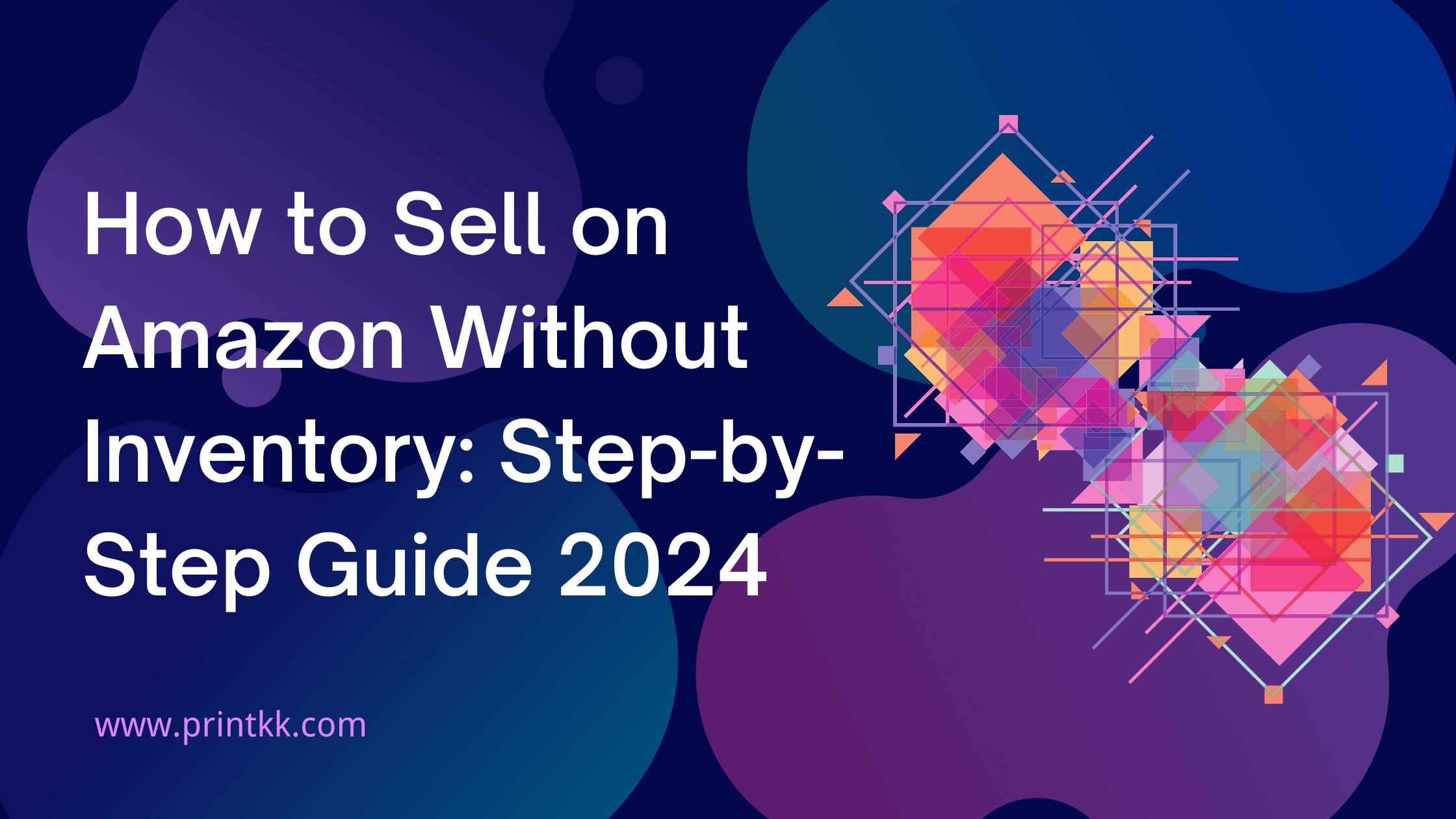
Struggling with the costs and complexities of inventory? Discover a streamlined path to e-commerce success. Our guide, "How to Sell on Amazon Without Inventory: Step-by-Step Guide 2025", unveils the secrets to selling on Amazon efficiently, without the traditional inventory burdens. Dive in and transform the way you do business online.
Introduction to Selling on Amazon Without Inventory
Imagine the freedom of selling on Amazon, one of the world's largest marketplaces, without the hassle of managing inventory. This intriguing concept is not just a possibility; it's a reality that's transforming the way entrepreneurs, designers, artists, brands, influencers, corporations, and dropshippers operate. Welcome to the world of selling on Amazon without inventory, a revolutionary approach that's reshaping the e-commerce landscape.
In this section, we delve into the essence of this model, exploring how it allows you to sell products without the traditional burdens of stock management. This method leverages the power of dropshipping and print-on-demand (POD) services, enabling you to offer a wide range of products without the need for physical inventory. It's a smart, efficient way to expand your online presence, tap into Amazon's massive customer base, and grow your business without the complexities of inventory logistics. Whether you're an established brand or an aspiring entrepreneur, this approach offers a streamlined path to success on one of the world's most influential online platforms.
Different Selling Methods on Amazon
Amazon's marketplace offers diverse selling methods, each tailored to different business needs and objectives. Entrepreneurs, designers, brands, and organizations can leverage these models to maximize their online presence and sales. Let's explore four key methods: Amazon FBA, Amazon FBM, Amazon Dropshipping, and Print on Demand.
Amazon FBA
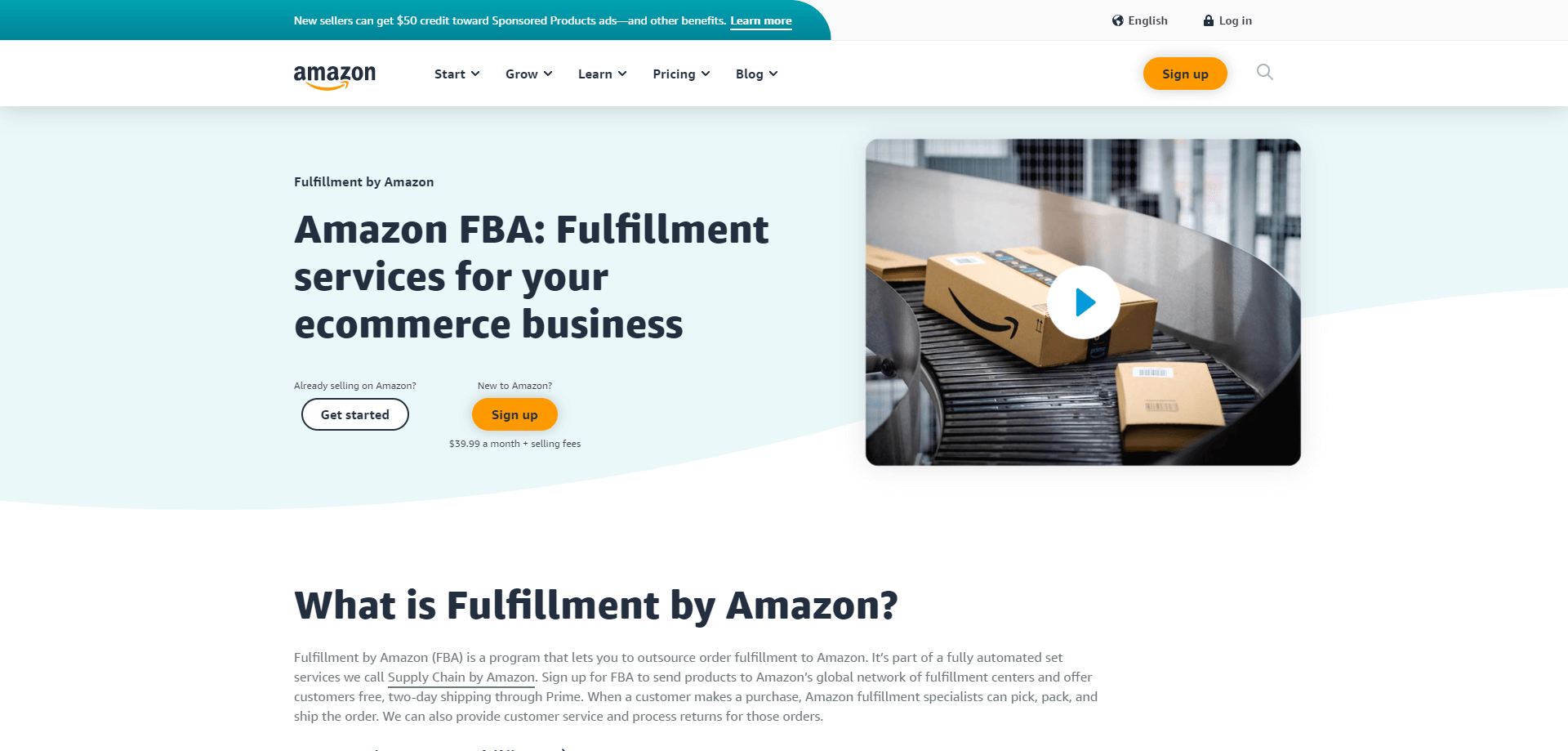
| How It Works | Sellers send their products to Amazon's fulfillment centers. Amazon handles storage, packing, shipping, customer service, and returns. |
| Pros | Access to Prime customers, reliable shipping and handling, potential for higher visibility and sales. |
| Cons | Costs for storage and fulfillment, less control over inventory management, potential long-term storage fees. |
Amazon FBM
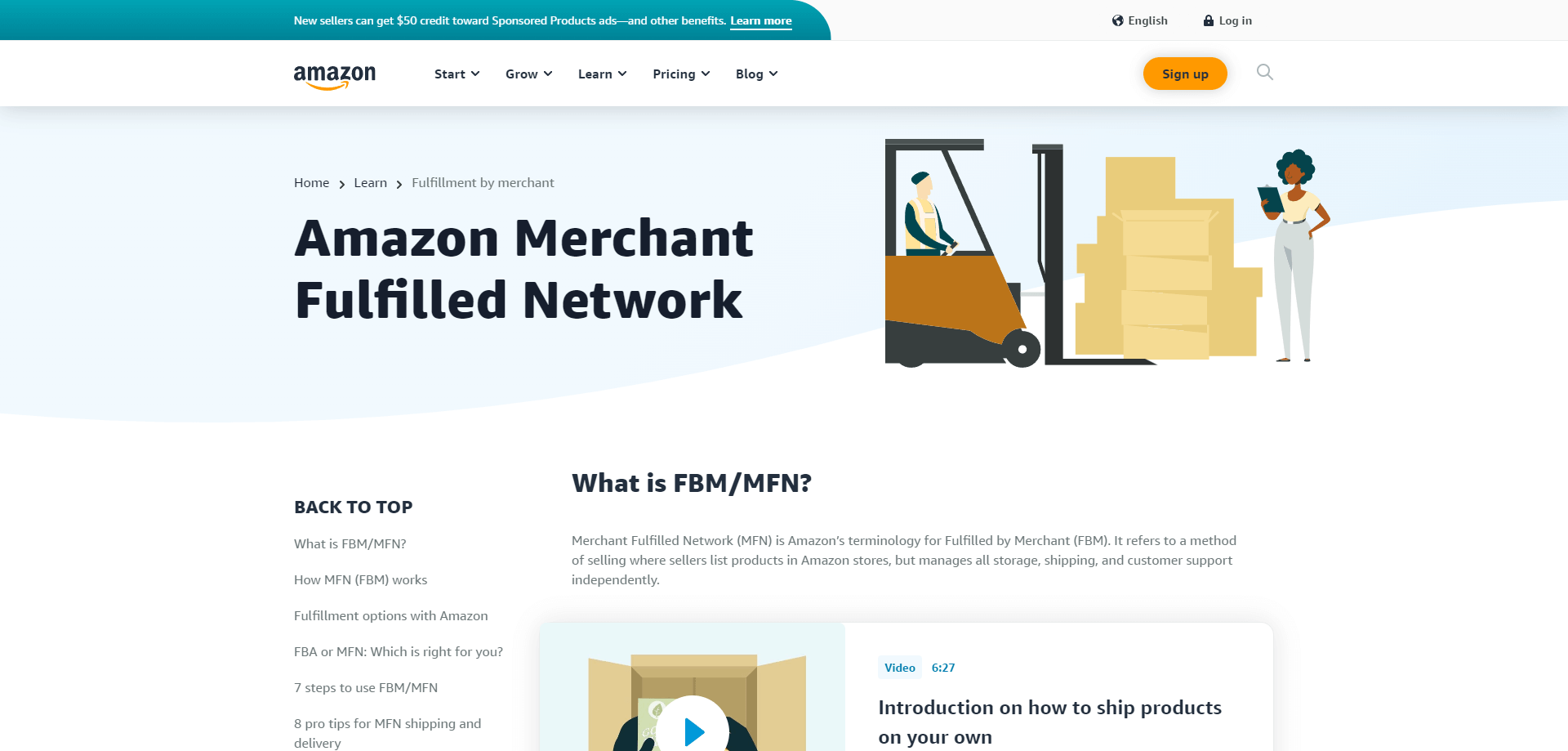
| How It Works | Sellers list products on Amazon but handle storage, shipping, and customer service themselves. |
| Pros | Greater control over inventory and shipping, potentially lower costs compared to FBA, direct customer interaction. |
| Cons | Higher responsibility for logistics, potentially slower shipping, no Prime badge leading to possibly fewer sales. |
Amazon Dropshipping
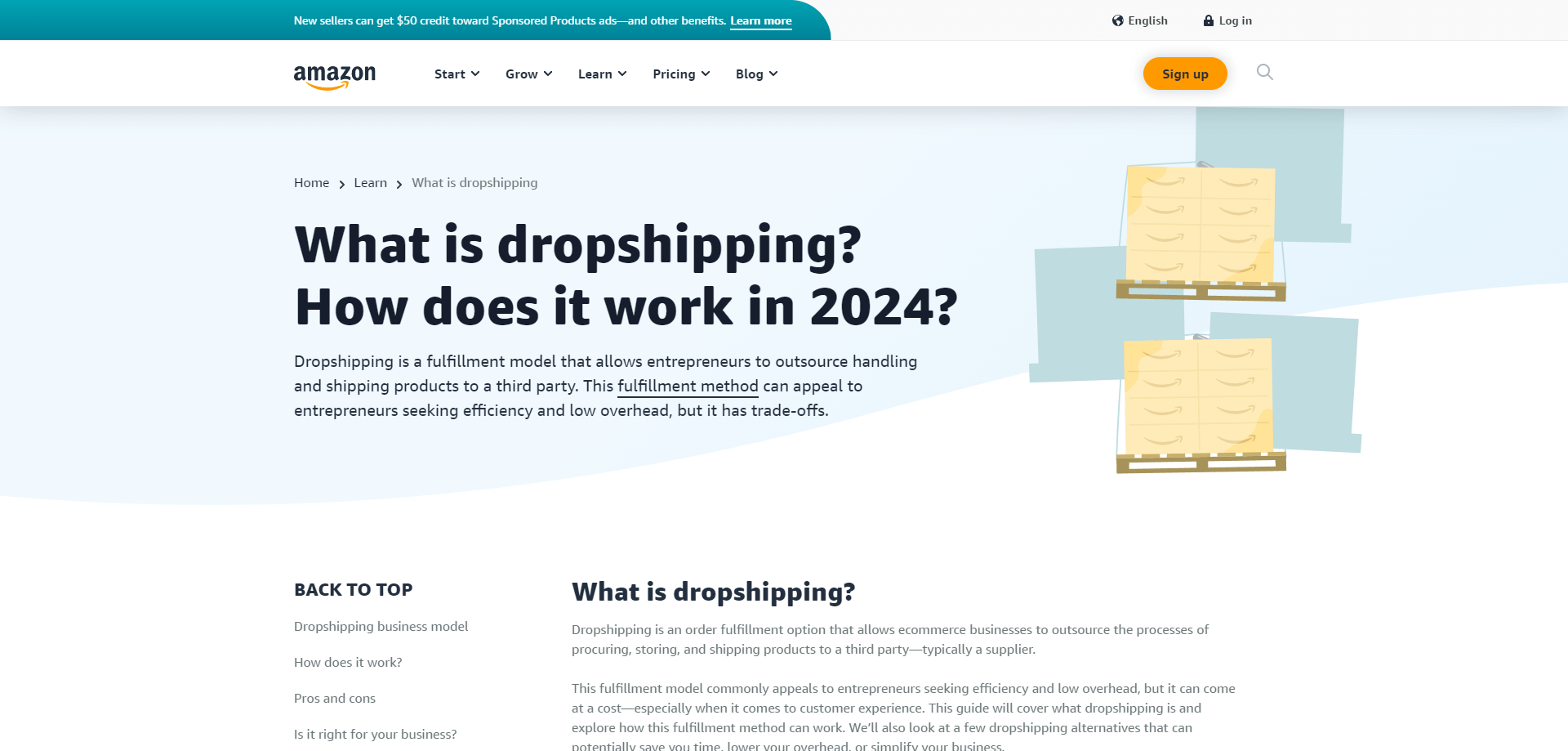
| How It Works | Sellers list products on Amazon, but a third party handles inventory and shipping directly to customers. |
| Pros | No need to handle inventory or shipping, lower upfront costs, flexibility in product offerings. |
| Cons | Less control over shipping and inventory, reliance on third-party suppliers, potential quality control issues. |
Print on Demand
| How It Works | Products are created and shipped only after a sale is made, typically using a third-party POD service. |
| Pros | Low inventory risk, unlimited product designs, scalability without inventory constraints. |
| Cons | Potentially lower profit margins, reliance on POD service for quality and fulfillment, limited product types. |
Benefits of Selling on Amazon Without Inventory
Selling on Amazon without inventory is a game-changer in the e-commerce world. It offers a unique set of benefits that align perfectly with the needs and aspirations of entrepreneurs, small business owners, designers, artists, and corporations. This approach not only simplifies the selling process but also opens up a world of possibilities for those looking to make their mark on Amazon's expansive marketplace.
Reduced Upfront Costs
No need for large investments in inventory
Eliminates the risk of unsold stock
Ideal for startups and small businesses with limited capital
Flexibility and Scalability
Easy to test new products without financial commitment
Scale business quickly in response to market trends
Adjust product offerings without inventory constraints
Minimal Risk and Overheads
No warehouse costs
Avoidance of issues related to inventory management and storage
Reduced financial risk in case of market changes
Broader Product Range
Offer a diverse range of products without physical limitations
Experiment with different niches and trends
Ability to quickly adapt to customer preferences
Focus on Marketing and Brand Building
More time and resources to concentrate on creating a strong brand
Ability to invest more in marketing strategies
Enhanced opportunity to engage with customers and build loyalty
These benefits highlight the effectiveness of selling on Amazon without the need to manage physical inventory. This model not only streamlines the operational aspects of e-commerce but also provides a fertile ground for creativity, strategic marketing, and brand development.
How to Sell Products on Amazon Without Inventory (Step by Step)
Selling on Amazon without holding inventory is a viable and profitable strategy, as demonstrated by various YouTube influencers. To grasp the intricacies of this business model, it's instructive to see how three influencers sequentially break down the process. For example, Jackie from the 'Private Label Method' video discusses the advantages of creating customized products that meet existing Amazon demand. She highlights the flexibility of this model, which allows for a digital nomad lifestyle, leveraging partnerships with suppliers from platforms like Alibaba to brand products and use Amazon's fulfillment services for logistics and customer support.
To launch and maintain a successful operation, one must carefully select a niche, set up an Amazon Seller Account, and establish relationships with trustworthy suppliers. Key steps also include optimizing product listings with Amazon SEO strategies and engaging in effective marketing. Influencers such as Kylie Jenner and Logan Paul have utilized similar strategies to create their own successful brands. By adhering to Amazon's policies and continuously refining your approach based on performance data, this inventory-free method can lead to a prosperous online business with significant potential for expansion.
Profit Guru: How To Sell On Amazon WITHOUT Buying ANY Inventory!! (The RIGHT Way)
Introduction:
The video opens with the question of whether it's possible to sell on Amazon without buying any products in advance. The answer is affirmative, and the selling model is called Drop Shipping.
Misconceptions about Drop Shipping on Amazon:
There's a common misconception that Drop Shipping is not allowed on Amazon. However, it is permitted as long as sellers adhere to Amazon's strict guidelines.
Explanation of Drop Shipping:
Drop Shipping means you act as a middle person, taking orders from customers and then passing them to the supplier or distributor, who then ships the product directly to the customer. This model is appealing because it doesn't require upfront inventory purchases.
Amazon's Drop Shipping Policy:
According to Amazon's terms of service, your supplier must identify you as the seller on all invoices, packaging materials, and external documents. Your store name, not the supplier's, must be on all items related to the order.
Importance of Supplier Compliance:
It's crucial to ensure that your supplier agrees to identify you as the seller of record to prevent confusion and maintain customer trust. A document called "seller of record" must be signed to formalize this agreement.
Supplier Selection Criteria:
Choose suppliers with excellent customer service, as you'll be responsible for customer interactions, and Amazon will not handle fulfillment. Ensure the supplier can process and ship orders promptly to maintain a good standing with Amazon.
Supplier Transparency:
Suppliers must have the authorization to sell branded products to avoid intellectual property violations. They should also provide accurate inventory counts to avoid overselling.
Avoiding Unvetted Suppliers:
If a product runs out of stock, don't panic and source from untrusted suppliers, as this can lead to various issues, including potential account suspension.
Account Health Metrics:
Keep your order defect rate below 1%. Use Amazon's Buy Shipping service to protect against claims related to late deliveries and to ensure valid tracking rates are maintained.
Finding Drop Shipping Suppliers:
Shopify and Wix e-commerce are recommended platforms to find vetted suppliers for Drop Shipping.
Conclusion:
The video concludes by reiterating that while Drop Shipping on Amazon is possible, it comes with risks. It's essential to follow Amazon's guidelines, choose trustworthy suppliers, and use Amazon's Buy Shipping service to protect your account health. The presenter, Cassandra, does not personally drop ship on Amazon due to the associated risks but acknowledges it might work for some sellers if done correctly.
Startup Reine: How to Make Money Selling on Amazon Without Inventory | Make $100 a Day
Introduction:
The video introduces a strategy to generate passive income on Amazon by selling physical products without having to handle them physically.
Amazon FBA (Fulfillment by Amazon):
The program allows sellers to store their products in Amazon's fulfillment centers. Amazon handles the shipping, customer service, and returns for these products.
Amazon FBA is the reason why many products on Amazon can be delivered quickly through Amazon Prime.
Advantages of Using Amazon FBA:
As a seller, you don't have to deal with the fulfillment or returns of orders.
You need to invest in inventory upfront, but Amazon takes care of the rest.
Getting Started:
You need to decide on a product niche rather than trying to sell a wide range of products.
It's recommended to focus on a specific category of products to manage resources efficiently.
Researching Products:
Use the Amazon Bestsellers list to find out what products are currently popular.
Look for evergreen products rather than seasonal ones to ensure consistent sales.
Finding a Niche Example:
The video suggests looking into the handbag niche as an example of how to select a product category.
Conducting Product Research:
Investigate the best-selling products in your chosen niche.
Look for products that are similar but not identical to popular items.
Consider the seasonality and year-round appeal of the products.
Sourcing Products:
Use Alibaba to find wholesale suppliers for the products you want to sell.
Conduct keyword searches on Alibaba to find similar products to those trending on Amazon.
Selecting a Supplier:
Choose verified suppliers who have been in business for at least three years.
Order samples from suppliers to check product quality before making large purchases.
Sample Testing:
It's important to test the quality, durability, and overall appeal of the product by ordering a sample, even if it's more expensive.
Bulk Purchasing:
After verifying the product quality, you can proceed to buy in bulk and send it to Amazon's warehouse for fulfillment.
Setting Up an Amazon Seller Account:
Sign up for an Amazon Seller account, which costs $40 a month.
List your products with titles, descriptions, and pricing.
Arrange for the supplier to ship the products directly to an Amazon warehouse.
Conclusion:
The video concludes by emphasizing how easy it is to generate passive income on Amazon using this method.
It invites viewers to check out the Passive World accelerator program for more assistance in building passive income streams.
Jacqueline Vagar: How To Sell On Amazon Without Inventory/ Stock (Beginners Guide)
Misconceptions Clarified:
She addresses common misconceptions that one needs a large operation to be a successful Amazon seller.
Private Label Method:
Jackie explains that she uses the private label method to sell on Amazon, which she finds to be the most profitable.
How Private Label Works:
The process involves creating a customized version of a product already selling well on Amazon.
Tools like fb.com are used to analyze products and identify those with high demand and sales.
Partnering with Alibaba and Amazon:
Alibaba is used to find quality suppliers and customize products, which are then branded.
Amazon handles the storage, shipping, and customer service once the products are sent to their warehouses.
Digital Nomad Lifestyle:
Jackie highlights that this business model allows for a digital nomad lifestyle or working from home, with no need for a warehouse or employees.
Private Label Examples:
She gives examples of influencers like Kylie Jenner and Logan Paul who have created successful brands by customizing existing products.
Competing on Amazon:
Jackie addresses concerns about competing with established brands, emphasizing that Amazon's vast customer base levels the playing field.
Getting Started:
She debunks the myth that you need a lot of connections, funding, or experience to start selling on Amazon.
Jackie's Personal Experience:
Jackie shares her journey of starting as a beginner, learning through YouTube videos, and investing her savings into Amazon FBA.
Learning and Launching:
She talks about buying courses for learning, the importance of research, and the excitement of launching her first product.
Success and Lifestyle:
Jackie discusses the freedom and potential of the business model, including the ability to scale and manage everything independently.
The Process:
She outlines the basic steps of opening an Amazon seller account, finding a winning product, creating a brand, and listing products.
Free Training Offer:
Jackie offers free live training webinars where she teaches the entire process in detail and answers questions live.
How to Sell Products on Amazon Without Inventory
Selling on Amazon without inventory has revolutionized the e-commerce landscape, offering a practical and lucrative opportunity for entrepreneurs, small business owners, designers, artists, and others. This approach allows for selling products on one of the world's largest online marketplaces without the traditional complexities and costs associated with inventory management. Here's a step-by-step guide to making this innovative business model work for you.
Choose Your Niche
Research and identify a profitable niche
Understand your target audience's preferences and needs
Select products that align with market trends and demand
Set Up an Amazon Seller Account
Create an Amazon Seller account
Choose between Individual and Professional accounts based on your business scale and needs
Complete the registration process with the required business information
Partner with a POD or Dropshipping Supplier
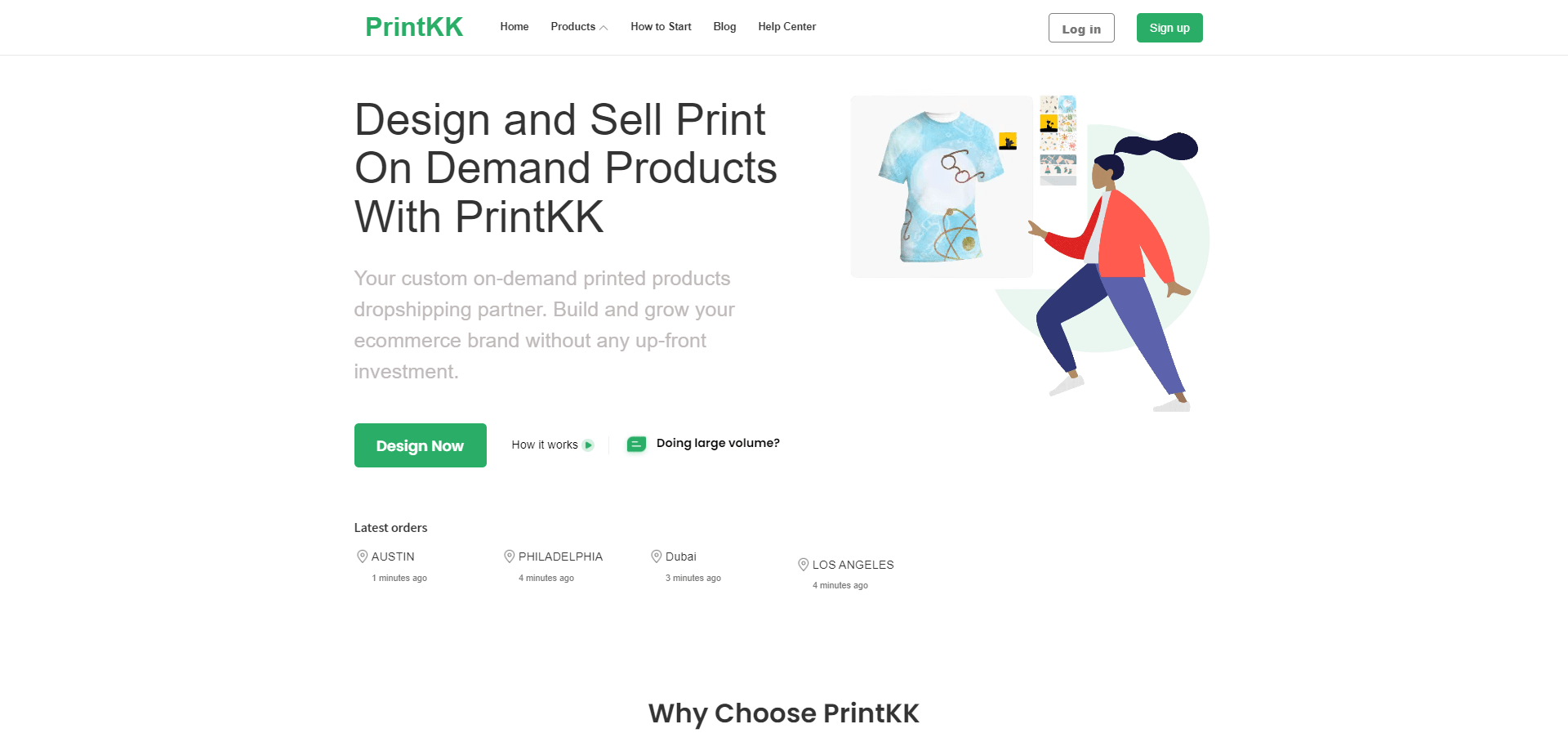
Find a reliable Print on Demand or dropshipping supplier such as PrintKK, known for quality products and efficient shipping.
Ensure they offer quality products and efficient shipping
Build a relationship for smooth collaboration
Create and Optimize Product Listings
Design compelling product pages with detailed descriptions and high-quality images
Use relevant keywords for SEO optimization
Set competitive pricing and shipping options
Implement Amazon SEO Strategies
Conduct keyword research specific to Amazon
Optimize product titles, descriptions, and backend search terms
Regularly review and update listings to maintain relevance and ranking
Leverage Amazon's Fulfillment Options
Consider using Fulfillment by Amazon (FBA) for efficient shipping and handling
Alternatively, arrange fulfillment directly through your supplier
Market Your Products
Utilize Amazon's advertising tools like Sponsored Products
Engage in social media marketing and email campaigns
Collect and showcase customer reviews for social proof
Monitor and Optimize Your Sales Strategy
Track your sales performance using Amazon's analytics tools
Adapt your product offerings and marketing tactics based on performance data
Continuously seek ways to improve customer satisfaction and repeat business
Following these steps can set you on the path to successfully selling products on Amazon without managing any inventory, opening up a world of potential for growth and profit in the ever-expanding e-commerce space.
Conclusion
In wrapping up, selling on Amazon without inventory is a dynamic and accessible avenue for entrepreneurs and business owners. This model caters to a broad range of professionals, from artists and designers to corporations and dropshippers, offering a practical solution to traditional e-commerce challenges.
It's clear that this approach not only streamlines business operations but also opens up vast opportunities for creativity, market adaptability, and growth. By leveraging the power of Amazon's platform, without the constraints of inventory management, businesses can focus on what truly matters - innovation, customer engagement, and brand development. This forward-thinking strategy paves the way for success in the ever-evolving digital marketplace.
FAQs
Can I sell on Amazon without having inventory?
You can sell on Amazon without inventory using dropshipping or print-on-demand. Partner with suppliers who handle production and shipping once you make a sale. This eliminates stock costs, reduces risk, and offers product flexibility, perfect for entrepreneurs aiming to utilize Amazon's marketplace efficiently.
Can I just sell anything on Amazon?
Selling on Amazon requires adherence to its guidelines, as some items are restricted or need approval. It's vital for sellers to understand these policies to ensure their products meet legal and safety standards. This compliance is essential for a secure marketplace and successful selling, especially with dropshipping or POD models.
How to make up to $10,000 per month on amazon without selling physical products?
Earning $10,000 monthly on Amazon can be done without physical products via Affiliate Marketing and Kindle Direct Publishing. By promoting products for commissions or publishing and selling e-books, you can capitalize on market needs and strategic promotion. Both require commitment and savvy marketing for success on Amazon's platform.










 Global Shipping
Global Shipping




























